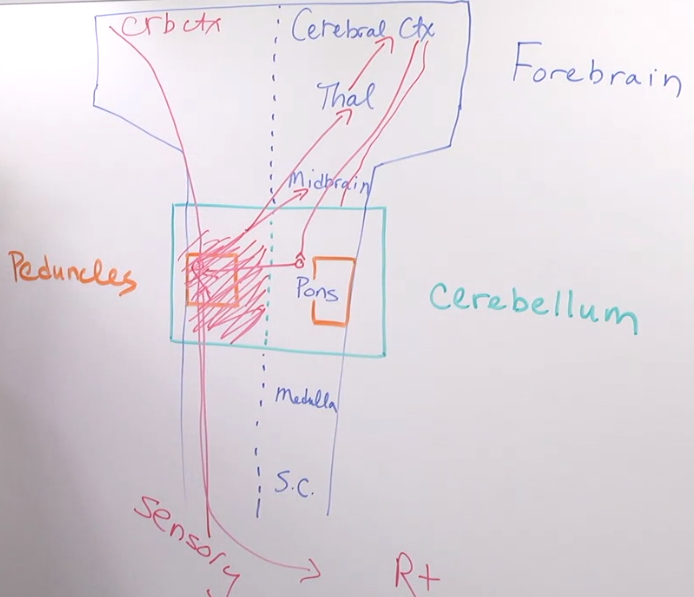Cerebellum: The Master of Movement Coordination
A key structure in the brain responsible for coordinating and refining our movements.
The Cerebellum: A Data-Driven Maestro
- Unlike the motor hierarchy, which provides a general plan for movement, the cerebellum acts as a fine-tuning mechanism.
- It receives a massive amount of sensory input from muscles, joints, skin, vestibular system (balance), and vision.
- This sensory data allows the cerebellum to adapt motor programs to our specific body and situation.
Why a Data-Driven Approach?
- Our bodies change throughout life. From a tiny baby to a full-grown adult, our proportions and structure transform.
- The cerebellum doesn’t have a pre-programmed plan; instead, it adapts to the body it’s given.
- This flexibility allows it to function optimally regardless of body size, shape, or even conjoined twin situations.
Beyond Anatomy: Adapting to Injuries
- Injuries or setbacks can temporarily alter our body’s capabilities (e.g., a broken arm).
- The cerebellum’s data-driven approach allows us to maintain some level of movement even with these changes.
The Cerebellum: More Than Just Movement?
- The cerebellum not only receives sensory data but also gets information from the cerebral cortex.
- This raises the possibility that the cerebellum might process non-motor information, potentially influencing emotions, thoughts, and communication (although this is still an area of debate).
Purkinge Cell
Cerebellar Function
Cerebellar Topography
Efference Copy and Sensory Reafference
 Cerebral Cortex and Body Maps
Cerebral Cortex and Body Maps
- The left motor cortex controls the muscles on the right side of the body.
- Information about touch, pain, and temperature from the right side of the body is processed in the left cerebral cortex.
Cerebellum and Body Maps
- The cerebellum works differently than the cerebral cortex.
- It controls movement on the same side of the body (ipsilateral).
- Sensory information enters the cerebellum from the same side of the body.
- Information from the cerebral cortex crosses the midline to reach the cerebellum.
- Information then leaves the cerebellum to go to the midbrain on the opposite side of the body and the thalamus (which relays information back to the cerebral cortex).
Stroke Effects on Movement
- A stroke in the left cerebellum will cause ataxia (incoordination) on the left side of the body.
- Damage to the cerebellar peduncles (which connect the cerebellum to other parts of the brain) will have the same effect as damage to the cerebellum itself.
Stroke and Combined Effects
- A less severe stroke affecting half of the pons (located in the brainstem) can cause:
- Ataxia on the same side of the body (due to cerebellar dysfunction)
- Paralysis on the opposite side of the body (due to disruption of information flow from the cerebral cortex to the spinal cord)